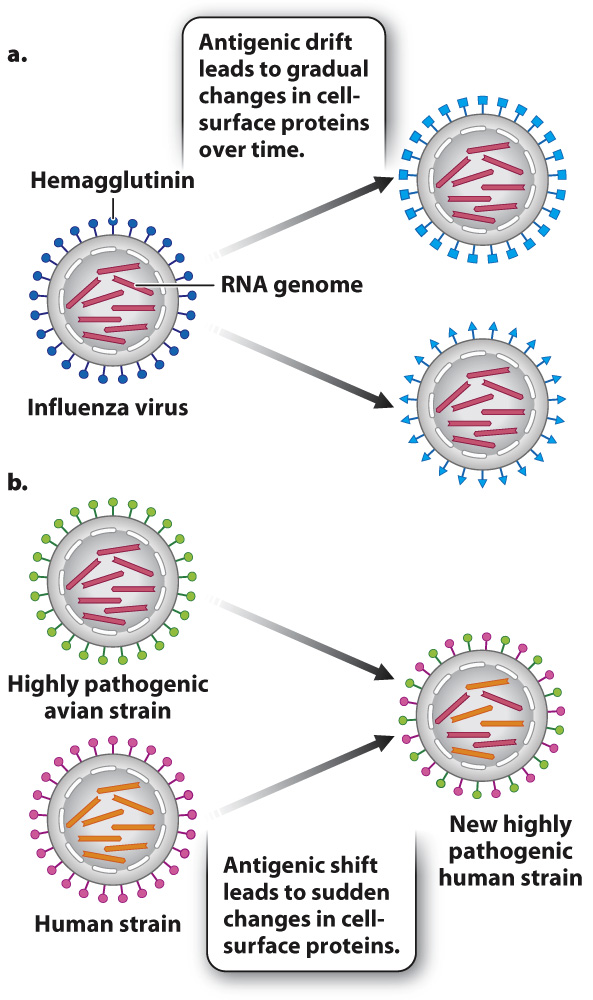The flu virus evades the immune system by antigenic drift and shift.
Everyone knows the symptoms: fever, chills, sore throat, cough, weakness, and fatigue, perhaps a headache and muscle pain. Many viruses cause these common flu-
The flu—
Part of the success of the virus lies in its ability to spread easily. It can spread in the air by small droplets produced when an infected person coughs or sneezes. It can also spread by direct contact or by touching a contaminated surface, such as a doorknob. Hand washing, therefore, is one of the most effective means of protection.

Another characteristic of the flu is its ability to evade the immune system. The flu virus can change its outer coat so memory cells, produced from earlier infections, no longer recognize it. There are three major types of flu virus—
Cells infected by viruses secrete cytokines that bring macrophages, T cells, and B cells to the site of infection, as we saw earlier. These cytokines, produced in abundance, lead to many of the symptoms commonly associated with the flu. For example, the cytokine interleukin-
Once in the cell, the virus replicates its genome and makes more virus particles (Chapter 19). However, viral replication is prone to error, so there is a high rate of mutation that leads to changes in the amino acid sequences of antigens present on the viral surface, including HA. This process is called antigenic drift (Fig. 43.18a). It allows a population of viruses to evolve over time and evade memory B and T cells that remember past infections.
Antigenic drift leads to a gradual change of the virus over time. The flu virus is also capable of sudden changes by a process known as antigenic shift (Fig. 43.18b). The viral genome consists of eight linear RNA strands. If a single cell is infected with two or more different flu strains at one time, the RNA strands can reassort to generate a new strain. H1N1, for example, has genetic elements from human, pig, and bird flu viruses. Antigenic drift and shift make it difficult to predict from year to year which strains will be most prevalent and therefore what vaccine will be most effective.